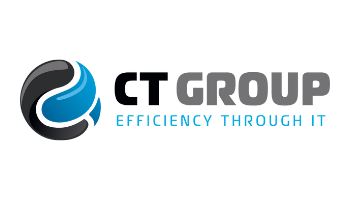As with most technology related topics, when it comes to IT Support and Service pricing models, it too can include an abundance of jargon making a contract and cost model presentation waiting on your desk for review one of those tasks that you ‘unintentionally’ might procrastinate on.
The thing is that – as with most cost models – whether it is IT Support cost, Marketing Agency fee structure or even Building Management cost, they will all vary and as sceptical beings, sometimes when it comes to cheaper options we tend to wonder, what’s the catch?
So being the start of the new financial year, we thought we would try and simplify the cost involved in IT Support and explain the most commonly found pricing models out there with the pros and cons of each one.
When it comes to an organisation’s IT, the cost can be broken into four categories:
- Hardware – This includes anything physical that you can actually see in your office such as monitors; laptops; keyboards; servers (if you have these on-site); phones; headsets; printers etc. Generally speaking, these will be costed on an ad-hoc basis so as and when you need them to be replaced or, due to expansion, need to add to your existing inventory.
- Licensing – These are like subscriptions, they have a set period assigned to them and have to be renewed at the end of each period. This will include your Microsoft Licenses; Software Licenses (e.g. Practice Management Solutions) etc.
- Projects – This will include things that require a four-phase approach 1. Scoping, 2. Quoting, 3. Planning and 4. Implementation. It requires a dedicated time period for implementation and usually needs several people to be involved. Things like office moves, moving from on-site servers to the cloud, security audits and telephony migration would be examples of IT projects that will be quoted only when required.
- IT Support – This is where you would find two common cost models: Ad-Hoc and a Managed Service Agreement. We have explained these in more details below.
Ad-Hoc Service Agreement
An Ad-Hoc Service Agreement is exactly as the name would suggest – you basically pay for IT Support as and when you need it. Your agreement will usually include an hourly rate that the work done will be billed at and there might even be different hourly tiers dependant on what is being worked on or the level of skill required. Generally speaking, there would be no lock-in contracts for an Ad-Hoc Service Agreement and you are therefore not bound to a provider for a set period of time. This agreement is very much ‘re-active’ as the provider will only engage with the client when an actual problem needs to be addressed with no service level guarantee, meaning the time it takes the provider to respond and or fix the issue is ‘best effort’. Projects, Hardware and Licensing will be quoted and billed separately to your Ad-Hoc costs.
Ad-Hoc – Pros:
- This type of agreement is ideal for start-up and small businesses to limit the cost of IT
- You only pay for what you use
Ad Hoc – Cons:
- There is no incentive for the provider to be efficient as they are paid irrespective
- The cost of fixing the root cause of recurring issues is very difficult to justify so in most cases it’s not done
- There is no long-term proactive solution/consulting partnership as the provider in most cases are unable to charge for it and it is not included in support charges
- There is no real accountability for incidents – ‘you didn’t call me so how would I know’
- Inability to budget efficiently as costs vary significantly
- Rarely have Service Level Agreements in place as it is difficult to predict workloads
Managed Service Agreement (MSA)
A managed service agreement is more like a partnership, compared to just being an IT Support Service. Your provider becomes your technology partner advising, supporting and proactively working on all things’ technology related for your business. Things in the technology space evolve at a rapid pace – especially when it comes to aspects such as cyber security threats. When you have a Managed Service Agreement in place, it means that your provider should ensure your business is advised and protected against these evolving threats, but also that as a business you are made aware of technology solutions you can adopt to better productivity and reduced costs where possible. Besides consulting on the above, as part of an MSA you will then also receive your general day to day IT support. A MSA usually forms part of a contract with it being an inclusive service with only Projects, Hardware and Licensing being billed separately.
MSA – Pros:
- The provider is fully accountable for efficiency and first-time fixes (stopping recurring issues from occurring) as their income does not change and “pays” them to reduce calls inbound – this is a win-win as the client has less issues and the provider is more efficient
- It requires a true partnership where client retention, relationship-building and reputation for the provider needs will always be front of mind
- Strict Service Level Agreements in place which ensures you can hold your partner accountable to the service you receive
- Ensuring the client is not compromised or has outages is critical as the provider will be held accountable should this happen and therefore proactive solutions are provided
- Ability to budget for the cost of IT Support
MSA Cons:
- Could be perceived as expensive if directly compared to Ad-Hoc without context provided – if you are considering this option, try and compare like-for like
- Choosing the wrong IT partner would leave you with a partner that treats the relationship like Ad-Hoc while paying for MSA
- You are likely to be locked into a contract period so flexibility around moving from provider to provider is hindered. This can be addressed by requesting an exit clause be placed in the agreement therefore giving you the freedom to leave if the service promised is not being delivered
Other points you might want to consider when looking at changing providers are:
- Ensure you are aware of what your out of hours support will be billed at – whether you are signing on to an Ad-Hoc Service Agreement or a Managed Service Agreement – and confirm whether out of hours support is actually something that can be provided. Not all providers have the staffing levels to support out of hours support.
- As mentioned above, hardware and project work would generally be quoted on an as and when basis, but worth checking if your potential or existing IT provider has a project management team that can manage these for you otherwise you might be roped into doing the project management on your organisation’s behalf.
- If you are a National business, ensure all your office locations, regardless of which State they are located in, will be supported during their operating hours. If you are in the ‘know’ and your organisation will be looking to expand Nationally in the near future, it might be a better option to consider a National provider than a local one to ensure your National IT support needs will be fulfilled in the future.
- Ask for referee details from existing clients and don’t be afraid to use them.
- Ensure your provider can provide on-site support as and when needed, especially if you are a National business.
Besides what cost model might be right for your business, there are obviously several other factors to consider but ultimately IT Support is a service being delivered. So really it comes down to whether your provider will be able to deliver the level of service you want and expect at the cost you can afford. So, if you are in the consideration phase of signing up to- or changing to a new provider and all those cost modelling proposals have you confused, contact us on the details below and we’ll try to bring some clarity.






